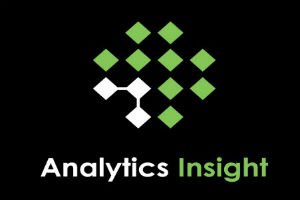Marc Andreessen wrote a prescient opinion piece In August 2011 called “Why Software Is Eating the World.” Andreessen pointed out that even in the depths of a global recession, a remarkable thing was happening as bold digital startups wrested control of industries like bookselling, moviemaking, music distribution, telecommunications, transportation, etc., from legacy competitors. Something similar is happening right now in market research, which AI will soon disrupt out of existence as we know it.
To clarify, market research will still exist, of course — in fact, it will be better than ever and more widely used by more companies to drive more decisions. But the way market research firms conduct studies today is almost over. AI is transforming the industry now, and in five years, it will be unrecognizable as companies rent algorithms to generate recommendations for everyday decision-making instead of paying market research firms a lot of money to conduct studies that yield insights.
Automating the Market Research Process from Design to Delivery
The fact is, market research today looks very much like it did 10, even 20, years ago. Market researchers have automated some processes and conduct surveys online more frequently today, but the methodologies they use have been dominant for more than a generation. That’s about to change. Over the next several years, algorithms will begin to perform many of the functions currently done by people, specifically: creating analytical frameworks, providing business context, and generating insights through analytics.
In the coming years, analytical frameworks and business context will be embedded in AI-driven market research tools. Small and midmarket companies — not just large enterprises that can afford to fund expensive, single-purpose research projects — will be able to rent algorithms that automate the research process, accessing a range of research methodologies and data sources and taking advantage of AI and machine learning technology to automate the research process from design to delivery.
This transformation is already happening with advanced solutions that leverage Natural Language Processing (NLP) to let business users ask questions in plain language and receive recommendations in language they can understand — as well as presentation-ready reports they can use to drive business decisions. One of the most exciting features of this type of technology is its scalability, which makes it possible to deliver value across the organization.
AI Will Eat Market Research’s Bread and Butter: Segmentation
So, how will AI transform market research in practical terms? Let’s take a look at a core market research function: customer segmentation. Research studies designed to segment customers in order to target them more effectively has been a bread-and-butter function of market research for decades. Traditionally, market research firms have achieved customer segmentation through a blend of human-driven art and science. Now, the function is being transformed with segmentation bots.
Unlike traditional market research, AI-driven market research doesn’t require project designers to limit the research techniques they use; they can use them all — including highly sophisticated (and traditionally expensive) market research techniques like conjoint testing. With AI, embedded analytic frameworks help the algorithm decide which segmentation method is best, and the business context is embedded programmatically. That’s a sea-change in the market research industry.
But one of the most dramatic changes is the fact that the output from AI-driven market research isn’t static, as it is in projects conducted using the traditional approach. The output from AI-driven market research is dynamic. AI can quickly apply new data from multiple sources — including sales, text, social media, publicly available information, etc. — and yield new recommendations that reflect a changing marketplace. Once the algorithm is built, it’s easy to apply in new ways, and it gets smarter.
The Future of Market Research
To cite one real-world example that illustrates where the shift to AI is leading, a global CPG enterprise that is an Absolutdata client now uses AI-driven market research to make day-to-day decisions about what products to sell at which price points. In this use case, Absolutdata’s ResearchAI solution accesses eight separate data sources, and business users ask questions in natural language and receive recommendations (also in natural language) that consistently deliver higher sales. Another tool gleans insight from data and creates a PowerPoint to report what it has learned.
Market research used to be a strategic asset, focusing on “why” consumers made specific decisions. Now, it’s evolving into a strategic AND a tactical tool, answering not only “why” but “what” and “how” to drive decisions on a daily basis. In the future, market research will be more scalable, and projects won’t require human expertise to develop frameworks and add business context. In the coming years, market research teams will focus more on bringing in data — observational, passive, video, social media, etc. — and use algorithms to generate not only insights but specific recommendations.
People in the market research industry may not want to hear it, but change is coming, and it’s moving so fast that within five years, the sector will be almost unrecognizable from what it is today. The good news is that market research that is faster, cheaper and better will democratize the function, ensuring it is used more widely by more companies to drive more decisions. Market research professionals who embrace this new reality will be in a better position to help their clients develop and sell products, as market research as we know it comes to an end and AI-driven processes take center stage.
























